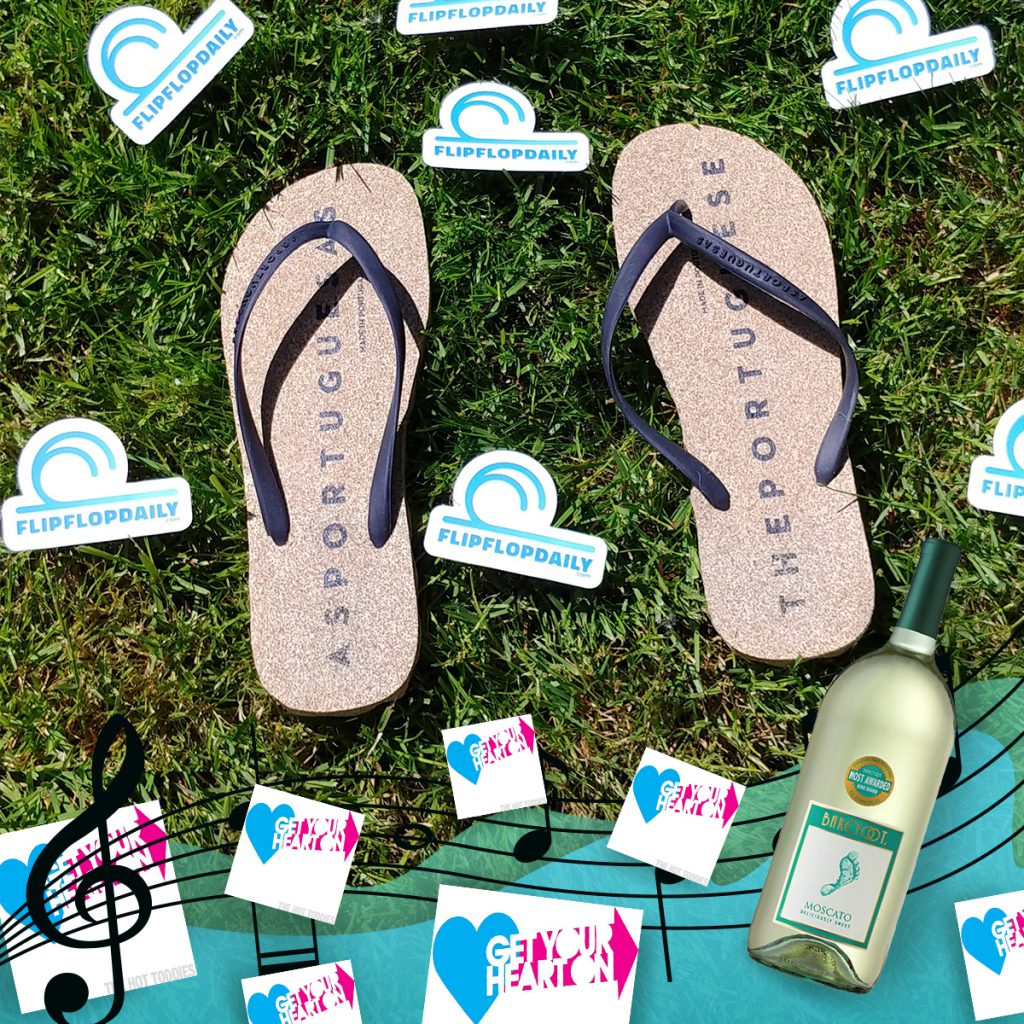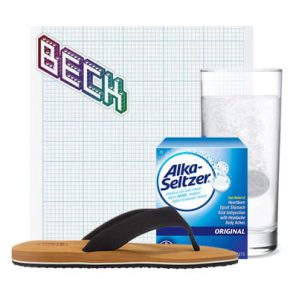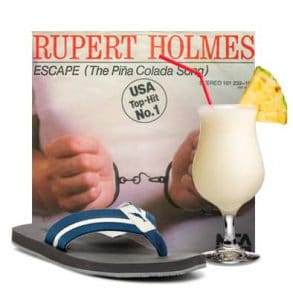I’m always on the lookout for new and interesting flip flops to review which so I snapped up a pair of Asportuguesas flip flops as soon as I saw them. I’d never heard of this brand and am not even sure how to pronounce it. Is it, “As Portugeuesas”, or “A Sportuguesas”, or “A Sport Ugesas”?
As I sat down to write this review, after having spent a few weeks (trying) to wear them, I decided to do a bit of research about the company – I visited the Asportuguesas site and read (most) of the “About Us” page.
There I found heaps of virtue signaling talk about “sustainability”, “renewable”, “carbon footprints”, “green communication”, “strong local economy”, and “manual extraction”. Disappointingly, I found nothing about a desire to make great flip flops.
I’d best describe the overall design of these flip flops as “Millennial broadcasting virtue”, which is to say “Millennial”, which is to say: “uninspired, insipid, and brittle”. In fact, I half expected them to come with a Hydro Flask, bamboo straw, and slice of avocado toast. Though VSCO Girl “adulting” may not be my style, this all-cork flip flop piqued my curiosity.
The Flip Flop Daily Faithful will recall that we really liked the cork footbeds of the Ugg Seaside Flip and the Ugg Tasmania. The Uggs each had a traditional durable rubber sole and the cork footbed was incredibly comfortable. Which made me wonder if maybe an all cork flip flop was the ticket?
“Though VSCO Girl “adulting” may not be my style, this all-cork flip flop piqued my curiosity.”
As it turns out, there may be a really good reason that this is the “world’s first all cork flip flop.” They are simultaneously fragile and bulky. Being made of only cork with a rubber strap there isn’t much to give them structure and the heft of the cork makes for a flip flop much heavier than it appears; like a rubber chicken they’re bulky and floppy.
The sole is carved with a deeply waffled pattern reminiscent of acoustic foam tiles. This made it very easy to see where I’d walked in them in the house. The carpet was embossed with a trail of waffle tracks wherever I went.
The issue with their traction elsewhere is that they are made of cork and cork, like natural sponge, or ancient grain scones tends to slough away when dragged across the pavement. To illustrate what I mean, take a wine cork and scrape it across the sidewalk – you’ll be holding less cork than when you started.
Venturing out for my first walk on the streets and sidewalks of the real world I was genuinely concerned that I’d return home nearly barefoot, with little more remaining of the flip flops than a pile of cork dust and a rubber strap, the soles abrading away across the cement with every step. What I hadn’t anticipated was that the cork degradation and resulting cork-dust would be an issue both inside and outside of the flip flop.
“The overall look is ‘Millennial broadcasting virtue’, which is to say ‘Millennial’, which is to say: ‘uninspired, insipid, and brittle’.”
At first all seemed well and my concerns of the flip flops destroying themselves abated. Then, after about three blocks I started to notice what I thought was dirt in my flip flop between my foot and the footbed. How could this be? I wasn’t walking in dirt but on a dry cement sidewalk. I stopped and shook out the debris and kept on walking, yet there it was again, cork-dust. Not only was the sidewalk eroding the out sole my feet were dredging away the cork on the footbed. Even worse, the buildup of cork-dust between foot and flip flop caused rubbing, which caused the formation of huge blisters on the ball of each foot after just about a mile of walking.
Wondering if this were an issue of me having tender feet, I swapped out the Asportuguesas for a new, and soon to be reviewed, pair of Hari Mari Brazo’s II’s , my feet still tender from the abuse dished out by the violently virtuous Asportuguesas flip flops. Thankfully, I was able to wear the Hari Mari’s for an entire week, covering literally dozens of miles of ground without a single blister, chafe, or tinge of pain. My feet weren’t the issue.
“If you’re looking to broadcast virtue, go green, or reduce your carbon footprint, save yourself the pain of wearing these flip flops and plant a tree instead.”
That rounds out my overall experience in these, the “world’s first cork flip flop brand.” They may be good for Portuguese Cork manual extractors, sustainable, and have a negative carbon footprint but all that is in vain because the end product, the flip flop, leaves much to be desired.
I confess that I don’t know if the Asportuguesas business model is good for the planet, economy, or humanity. However, I do know that it isn’t good for making flip flops.
So, if you’re looking to broadcast virtue, go green, reduce your carbon footprint, or take a walk without developing angry blisters, save yourself the pain of wearing these flip flops and plant a tree instead.
Social virtue as a business model almost always sacrifices the quality of the final product and loses sight of the true virtue in crafting a quality product, which seems to be the case with these Asportuguesas flip flops.












